
 Home
Home
 Updater
Updater
 Me
Me
 Living
Living
 Sport
Sport
 Work
Work
 Contact
Contact
 Germar's Monthly Updater
Germar's Monthly Updater
|
May 2001: Rocky Mountains National Park
In the middle of May, I was on a meeting in Boulder, Colorado. Boulder is not far from Denver, located on the border between the Rocky Mountains to the West and the Great Plains to the East. It is the United State's Mecca for atmospheric research with the National Center for Atmospheric Research and a large branch of the National Oceanic and Atmospheric Administration inside the city limits. Moreover, Boulder has a university and the streets are full of lively students. In particular, I like the mall in the center of the city with no cars, lots of trees, street musicians, performance artists, nice shops, and cozy pubs:
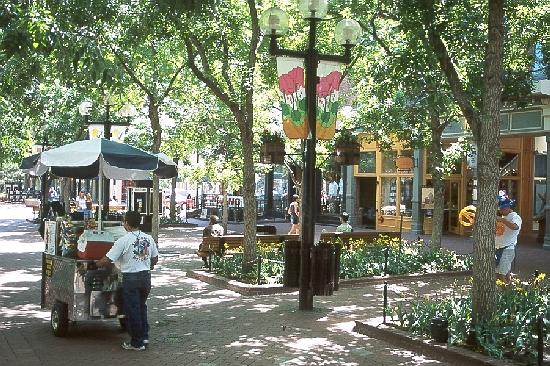
After my meeting, I went to Rocky Mountains National Park. The park is about a one hour drive away from Boulder. It contains almost 1100 square kilometers of the most spectacular mountain scenery in America. Several peaks are over 4000 meters high, with Longs Peak being the highest, raising up to an altitude of 4300 meters above sea level. Below is Moraine Park with Longs Peak in the background, partially shrouded in clouds. Moraine Park was shaped during the last ice age by the Thompson Glacier. The now forested ridge in the center of the photograph is the remnant of the glacier's lateral moraine.
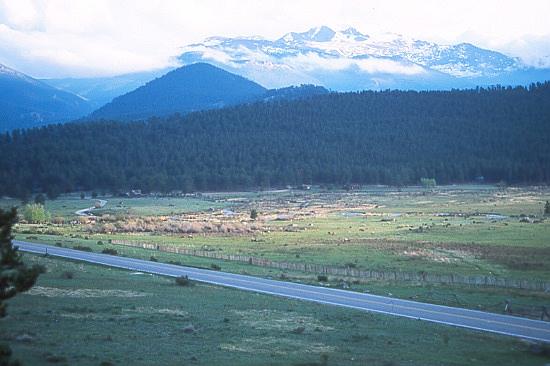
Moraine Park is now a realm for elks. They are plentiful and quite used to curious tourists. I have to come back in fall to see the antlers full-grown and the bulls fighting against each other.
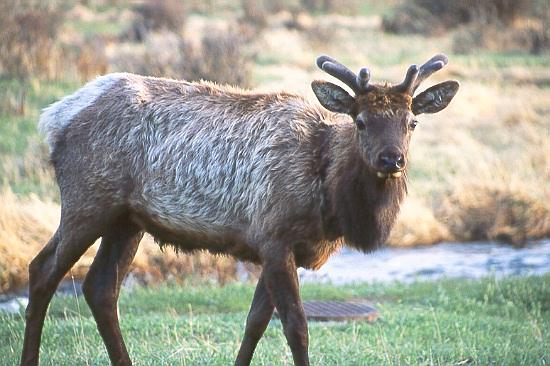
There were lots of other critters around, too, like this little chipmunk...
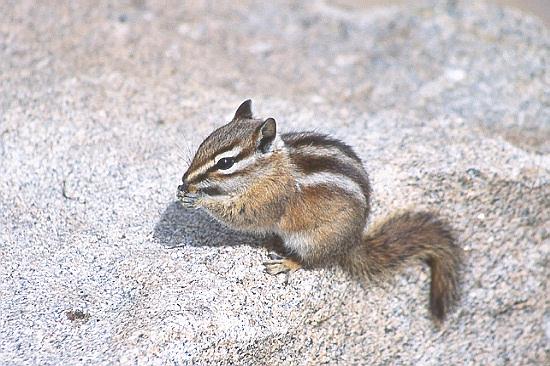
... and this great blue bird called Steller's Jay.
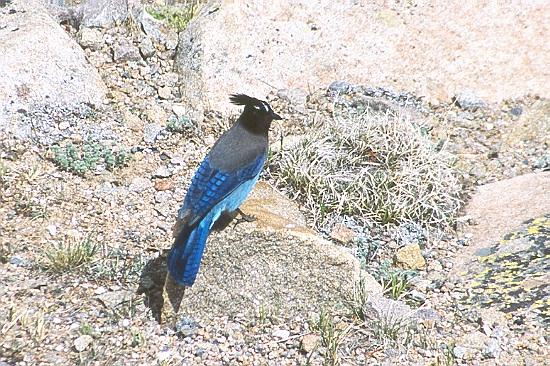
Below is the Alluvial Fan of Horseshoe Park. It was formed on July 15, 1982, when Lawn Lake higher up in the mountains broke through its terminal moraine that had held since the end of the last ice age, thousands of years ago. The release of 29 million gallons of water swept trees and car-sized boulders four miles down to the valley floor. Three campers were killed and the town of Estes Park at the foot of the National Park was flooded to a depth of six feet. Look for the fischerman to get a feeling for the size of the boulders!
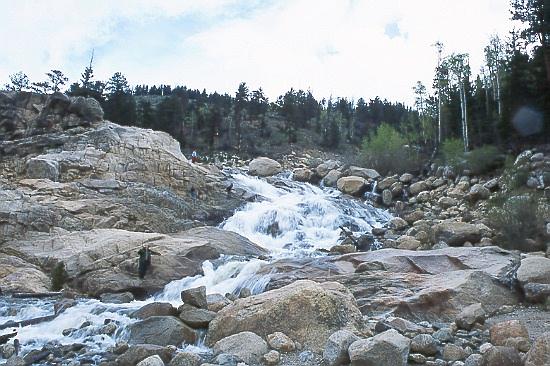
Not all rivers have such a dramatic genesis. Below are the Alberta Falls, which are just a short walk away from the Park's access road.
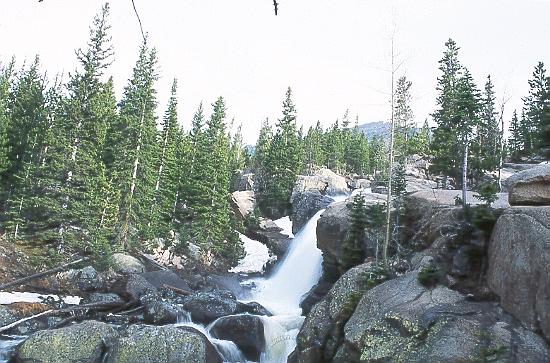
Unfortunately, my time ran out and I couldn't make it to Bierstadt Lake to find out whether the Lake is either full of beer or at least accommodates a cozy pub.
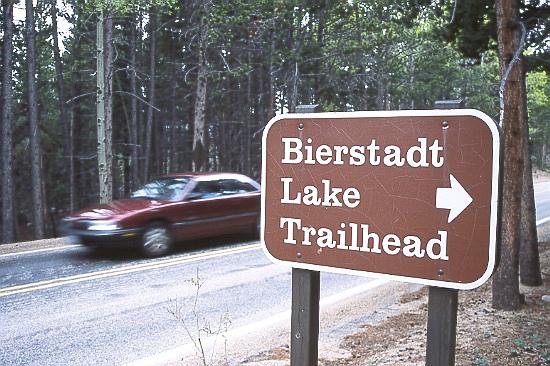
I finally left the park after a great day, leaving all deer, elks, and mouse alone for the night.
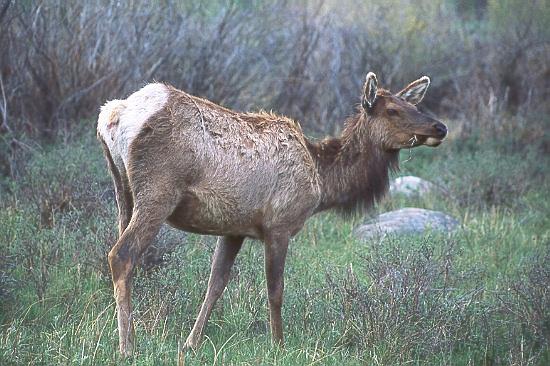
The next day, I hiked up to Green Mountain, just west of Boulder. The summit is marked by a plaque, donated by the local hiking club, that gives the height and position of all peaks of the Rockys in the vicinity of Boulder. There are quite a few that are above 12,000 feet!
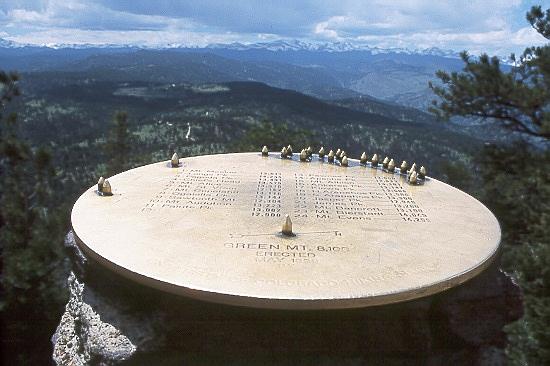
The next weekend was Memorial Day Weekend and I drove up to Lake Isabella, about 300 miles north of San Diego. I did the same trip last years. Look on the Updater from May 2000! The lake is famous for good wind and I was also not disappointed this year. From Saturday to Monday, the wind speed was steadily increasing. On Monday, gusts reached over 35 miles per hour, which is about 7 Beaufort. I was staying overnight just below the sensor that provided the measurement below.
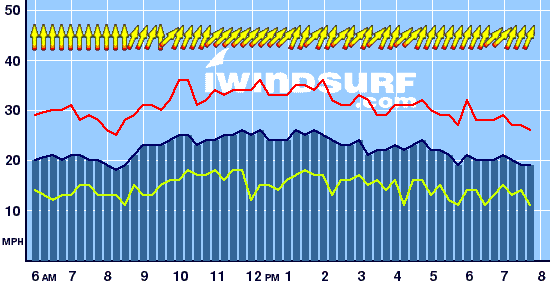
| |||||||
|
Top | Updates from 2001 | Current Updater
Last updated: 23 January 2016
|
|||||||